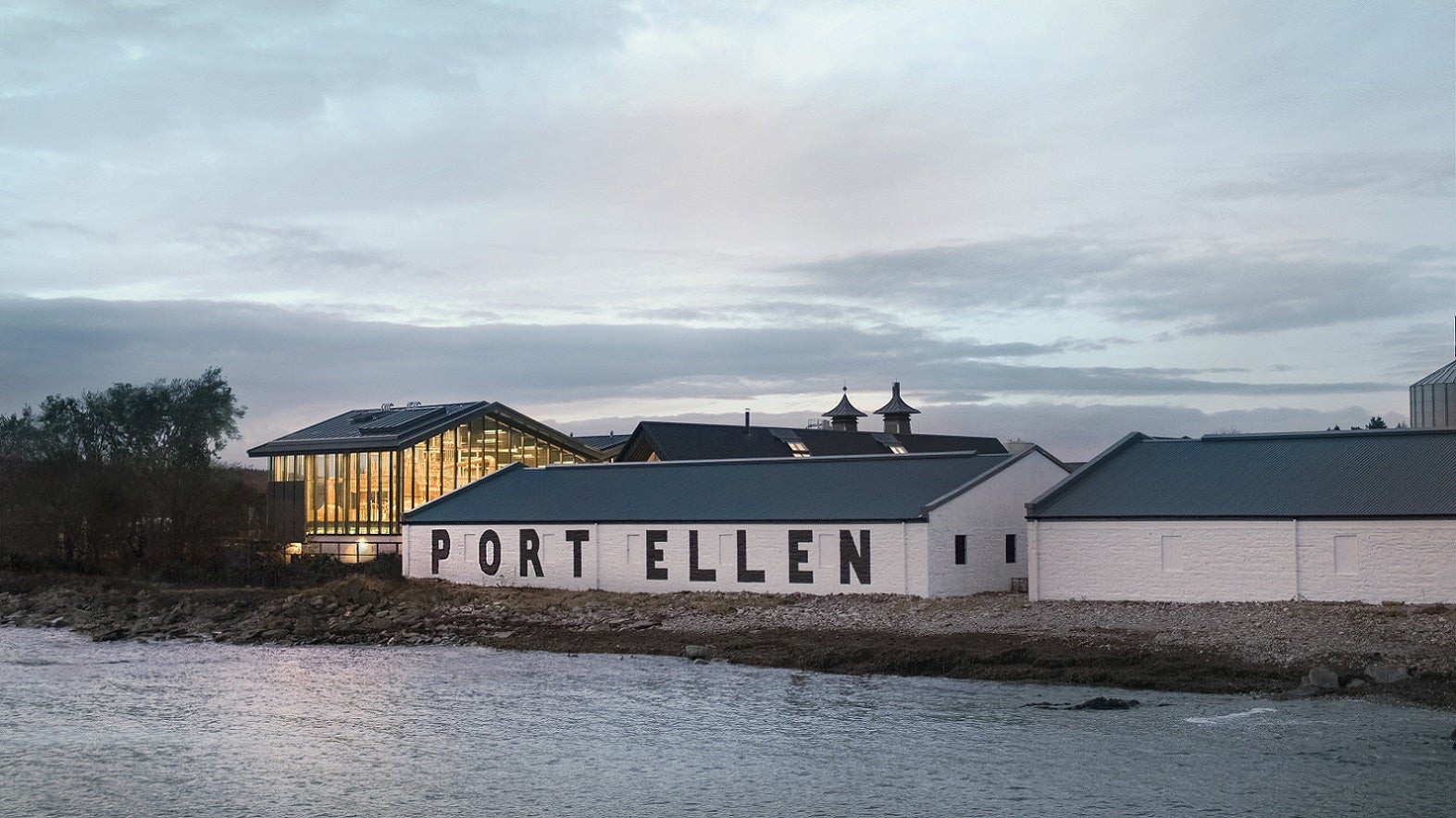Comment
Rejoice as Diageo reopens Port Ellen but closures may soon haunt spirits industry
Diageo reopening Port Ellen is good news but fragile demand for spirits could lead to other distilleries falling silent, writes Richard Woodard.

The still house of Port Ellen distillery on Islay. Credit: Diageo
There’s a lot of romance attached to the whisky business and I’m not sure the reopening of Diageo’s Port Ellen distillery on the isle of Islay – two centuries after it was originally built and just over 40 years after company precursor Distillers Company Ltd (DCL) closed it down (apparently) for good – will have done much to redress the balance between mythology and reality.
Plainly, the ‘new’ Port Ellen, resplendent in its glass-walled still house and ‘Phoenix’ stills, is good news. The creation of new Port Ellen spirit is an undeniably thrilling thought.
Nonetheless, I couldn’t help raising an eyebrow on hearing the distillery has “a proud heritage of leading innovation and experimentation”. Up to a point, Lord Copper, and only if you delve pretty deeply into the history books.
Even before Port Ellen was closed (and subsequently dismantled) in 1983, the distillery had endured a difficult history, having been silent between 1930 and 1967. And its demise was one of many contemporary tales of woe: in February 1983, DCL announced the closure of 11 malt distilleries and one grain plant in Scotland, Port Ellen and Brora (also since resurrected) among them. Seventeen people lost their jobs at Port Ellen: well over 500 in total.
This was the time of the whisky loch, when single malt was in its infancy and the raison d’être of malt distilleries was to feed the blenders. Thanks to a combination of plummeting demand and peated whisky being pretty unfashionable, DCL simply didn’t need Port Ellen when it already had two other plants making broadly the same style of whisky on Islay.

Credit: Inspo on Unsplash
Brutally put, Caol Ila and Lagavulin were important to the blenders; Port Ellen wasn’t. The plant also reputedly suffered from poor water supply and difficult working conditions. In other words, there was a sound business case for shutting the place down.
Throughout this period, the industry had an up-and-down relationship with peated whisky. Ardbeg may be a Moët Hennessy-owned darling of the Islay single malt scene today but it’s a minor miracle the distillery didn’t go the way of Port Ellen, having spent much of the 1980s and 1990s silent, undergoing painful experiments, or being pillaged for spare parts by fellow Allied Distillers plant Laphroaig. Its £7.7m ($9.7m) rescue by The Glenmorangie Company in 1997 was as much a passion play as a rational business move.
Few had thought such pungent styles of whisky would become serious players on the nascent single malt scene. When DCL launched the Ascot Malt Cellar Collection (a precursor to the hugely successful Classic Malts range) during the 1980s, old hands at the company were dubious about including a Lagavulin 12-year-old expression (and a Talisker eight-year-old). Surely these notoriously smoky whiskies were simply too challenging for palates more accustomed to lighter shades of blended Scotch?
Even in the early 2000s, as the star of Port Ellen began to rise and the distillery featured in early iterations of Diageo’s annual Special Releases programme, some queried whether the company would be able to charge as much as £100 a bottle for them. Today, Port Ellen Gemini – a set of two 44-year-old single malts released to mark the distillery’s reopening – will set you back £45,000.
The spectre of fragile demand
Thank heaven, you might interject at this point, that we live in very different times, that Port Ellen – and Brora (restarted in 2021), and Rosebank (2023) – are back in operation, laying down spirit to delight future generations.
Absolutely and, for the foreseeable future, it’s hard to imagine that any of that formidable trio will fall silent again, given the cult status they have earned over the past couple of decades – a status, ironically, only reinforced by the fact of their closures.
But let’s not fool ourselves that there won’t be more Port Ellens and Broras in other parts of the spirits industry, especially at a time when consumption trends are looking more fragile than they have for a generation (in the US especially).
Back in 2011, New Columbia Distillers became the first distillery to open in the Washington DC area since before Prohibition; four years later, it was joined by One Eight Distilling in Ivy City, making a variety of gins, vodkas and whiskeys. Another story of romantic resurrection but this time without a happy ending.
In February, it was announced that One Eight was closing down by the end of this month; New Columbia was acquired by MGP Ingredients in early 2020 and production ceased at its DC distillery in 2022 (although MGP still makes its Green Hat Gin).
They’re not alone. The forums of the American Distilling Institute (ADI) feature kit and entire plants that are up for sale as the burgeoning ‘craft’ distilling movement enters a new phase.
Can the US, for example, support around 2,300 individual distilleries?
There were 75 distilleries in the US in 2006, according to ADI figures; in 2014, the number topped 500, reaching 1,000 in 2017 and 2,000 only three years later. The pre-Covid period was one of huge numbers of start-ups and very few exits.
Despite the obvious challenges of the pandemic, many companies were initially cushioned by financial support and pivoting into making hand sanitiser (some even made more money out of this than they ever had out of conventional spirits). Now, however, reality is biting.
Given the complexities of its trading landscape, the sometimes cut-throat attitude of distribution partners and stuttering consumption trends, can the US support around 2,300 individual distilleries? Even if faltering demand is short-term and cyclical, rather than structural, I’m not so sure that it can.
These are the inevitable growing pains of a maturing industry – a Darwinian culling of those with inadequate business models, or those who have spread themselves too thin by pursuing alternative revenue streams, such as event spaces and restaurants.
But, in some cases, the reality will be more brutal still: distilleries will close simply because not enough people want to buy their products anymore. And so, even as we rejoice in the rebirth of Port Ellen and look forward to a bright future for this legendary name in malt whisky, let’s not forget that its story is as much about failure as it is success.